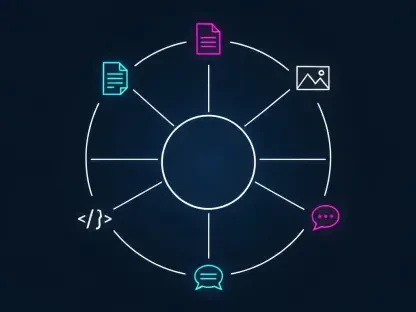Listen to the Article
There’s a cost some companies don’t see—until it’s too late. In boardrooms and IT meetings alike, cloud-first strategies are getting the green light. Digital transformation is no longer a distant ambition but a current reality, driven by AI integration, remote work infrastructure, and the need for real-time decision-making. Yet, even as budgets shift toward modern platforms, many businesses remain shackled by legacy infrastructure.
The culprit? On-premise technology that continues to siphon resources quietly, creating what is called the “silent tax”: the hidden operational, financial, and strategic costs of clinging to outdated systems in a cloud-efficient world.
For many organizations, the math doesn’t show up in obvious ways. But make no mistake—the silent tax is being paid. This article unpacks the true cost of on-prem in today’s tech-driven economy, why it persists, and how forward-looking companies are rethinking infrastructure decisions to save money and unlock sustainability.
What the Silent Tax Actually Looks Like
The most dangerous cost is the one that’s buried, and with on-premise systems, this cost hides in everything, be it unexpected maintenance or stalled digital projects. While the upfront cost of cloud migration might seem daunting, the ongoing drain of legacy systems is often more severe.
Take infrastructure management; On-prem environments demand constant upkeep—cooling systems, power management, physical security, hardware refresh cycles, patch management, and disaster recovery planning. These are fixed costs that scale poorly.
Then there’s staffing. Maintaining on-prem frequently requires a niche skill set. These roles require a specialized hiring approach, a clear talent acquisition and retention strategy, and interview expertise. So, organizations end up with teams dedicated to managing infrastructure instead of delivering business value. That translates to higher payroll costs.
Security is another layer of the tax. In 2024 alone, breaches tied to unpatched legacy systems accounted for nearly 40% of enterprise cybersecurity incidents, according to IBM’s annual X-Force Threat Intelligence Index. While modern cloud platforms offer built-in security updates and shared responsibility models, on-prem systems demand manual oversight—a burden many overstretched teams struggle to meet.
And finally, there’s the toll on innovation. Legacy environments often can’t support the kind of rapid experimentation, integration, and scalability that today’s digital economy demands. That means slower go-to-market timelines, brittle digital products, and internal resistance to emerging tech.
Why the Tax Persists
Despite its drag on growth, on-prem technology is often defended by three powerful forces: familiarity, financial inertia, and fear.
Familiarity breeds comfort. For IT leaders who’ve built careers managing physical infrastructure, on-prem offers a sense of control. They know the systems, the workflows, the pain points. That makes it harder to see the inefficiencies clearly.
Financial inertia plays a big role, too. Many enterprises have spent millions, if not billions, building out data centers, configuring private networks, and purchasing long-term licenses. So, walking away from those investments feels counterintuitive, especially when ROI is still being amortized on paper.
Finally, there’s the fear of disruption. Migration projects are complex, and the risk of downtime or data loss looms large. Leaders often delay the decision, hoping to avoid short-term pain—even if it means accepting long-term drag.
While these reasons are understandable, they’re not strategic. The cloud is now the default, and the longer companies wait, the harder and costlier the transition becomes.
Hybrid Environments: A Stopgap or a Strategy?
In response to the cloud/on-prem dilemma, many companies opt for hybrid models. On paper, this seems like a best-of-both-worlds approach. In practice, it regularly introduces complexity without eliminating the silent tax.
Managing hybrid infrastructure requires duplicate skill sets, careful orchestration, and expensive integrations. Unless managed intentionally, these setups can become a new version of tech debt—a patchwork of cloud and legacy systems that strain IT resources and hinder transformation.
That said, hybrid approaches can be a stepping stone when part of a clear, time-bound migration roadmap. When companies treat hybrid as a stage, not a strategy, they can maintain critical workloads on-prem while preparing cloud-native environments for long-term growth.
Cloud is Not Just About Cost
One of the most common misconceptions is that the cloud is simply a way to cut IT costs. While cost efficiency is part of the value, it’s not the whole story. The real value lies in what cloud setups enable: agility, scalability, data-driven decision-making, and resilience.
Cloud-native companies deploy faster and adapt quicker to market changes. They can launch new services globally without building out infrastructure. They can integrate AI and analytics tools at scale. And perhaps most importantly, they can pivot.
In an economy where product cycles are shrinking and customer expectations are rising, the ability to pivot is crucial.
How Forward-looking Companies Are Shedding the Tax
Across industries, companies are taking deliberate steps to exit the on-prem tax cycle. Some are migrating in waves, starting with less critical workloads and using early wins to build momentum. Others are partnering with managed service providers to handle transitions with less risk.
There’s also a growing emphasis on FinOps (cloud financial management practices that help organizations track, predict, and optimize cloud spend in real time). This visibility helps them turn their cloud infrastructure into a strategic lever.
Take the example of DHL, a global logistics firm that recently shifted its infrastructure to the cloud. They launched a software platform with Blue Yonder on Microsoft Cloud to accelerate the implementation of warehouse robotics through standardization.
The IT leader behind the move didn’t frame it as a cost-cutting exercise. Instead, the narrative focused on speed-to-insight and supply chain agility, resulting in an improvement in demand forecasting accuracy.
Conclusion: The Cost of Standing Still
On-prem tech may feel familiar, but it’s no longer neutral. In a cloud-efficient world, it actively holds companies back. Whether through hidden maintenance costs, security vulnerabilities, or missed opportunities for innovation, the silent tax of legacy infrastructure is real—and rising.
As a B2B leader, the question now is: How fast can you modernize without disrupting business continuity? It will require a clear vision, internal alignment, and strategic execution. Because the true price of an outdated system is not just a loss of profits, it’s a loss of competitiveness.









